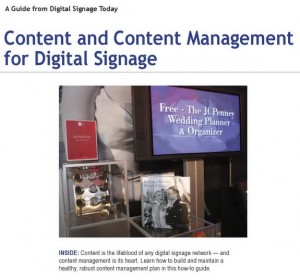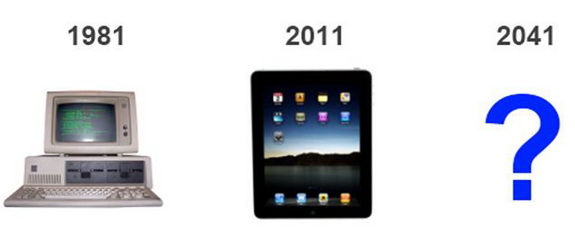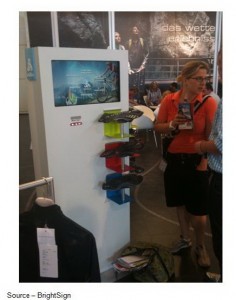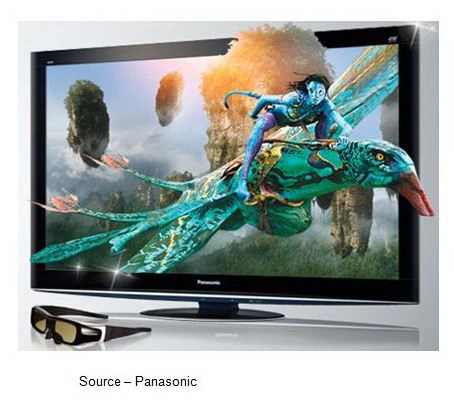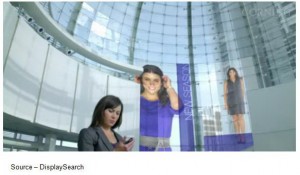DESIGNERS. The artful use of digital displays, interactive technology, and digital communications networks is creating compelling and information-rich spaces for inspiration, education, and networking in retail stores, airports, museums, malls, and entertainment venues.
 Because designing these energy-infused spaces takes a unique set of skills and insight, the Society of Experiential Designers (SEGD) is presenting a day-long Customer Experience (CX) Workshop on Tuesday, March 10 as part of the Digital Signage Expo (DSE), March 10-13 at the Las Vegas Convention Center. Geared for designers, marketing and branding professionals, and technology providers, the workshop runs from 9 am to 5 pm and covers the basics of customer experience design.
Because designing these energy-infused spaces takes a unique set of skills and insight, the Society of Experiential Designers (SEGD) is presenting a day-long Customer Experience (CX) Workshop on Tuesday, March 10 as part of the Digital Signage Expo (DSE), March 10-13 at the Las Vegas Convention Center. Geared for designers, marketing and branding professionals, and technology providers, the workshop runs from 9 am to 5 pm and covers the basics of customer experience design.
SEGD is a global, multidisciplinary community of professionals who plan, design, and build experiences that connect people to place. SEGD’s 1700 members from 20 countries include graphic and information designers, fabricators, architects, exhibition designers, technology integrators, interaction designers, brand strategists, and others who have a hand in shaping content-rich experiential places.
The workshop at DSE will present an overview of the basics of customer experience (CX) design and technologies that can be used to create dynamic interaction, customization, and unique, attention-getting experiences.
The experts at SEGD contend it’s important for creators of customer experiences to understand what technology can and cannot deliver.
“The Customer Experience is where new technologies and design meet. When you design the new customer experience using design thinking to focus on the user, not the technology, that is when the magic happens,” said Clive Roux, CEO of SEGD. “We’re partnering with DSE to bring design, marketing, and technology together at this event to experience what is possible when design and technology work together.”
The five program modules will discuss the state of CX, how to create a seamless customer experience across multiple platforms, how to use digital displays for more engaging shopping experiences, and best practices for integrating display technology. Speakers will also discuss what is possible with new models of immersive media for public spaces.
The presentations will include insights from top CX innovators, including :
- Brian Dyches of OpenEye
- Jeffrey Dumo of Array Interactive
- Douglas Hampton-Dawson of Reality Interactive
- Brian Brindini, Gensler
- Matt Schmidt, Reflect
- Darren David and Nathan Moody, Stimulant
DSE is the world’s largest and longest-running conference and trade show exclusively dedicated to showcasing innovative digital communications and interactive technology solutions for customer- and employer-facing organizations. Launched in 2004, DSE was the first event dedicated to the digital signage market and has contributed to the growth of this fast-paced field.
“SEGD’s program is the perfect fit with Digital Signage Expo because our attendees are increasingly interested in integrating digital displays into their venues as part of the built environment,” said Richard Lebovitz, educational director for DSE. “SEGD understands the importance of this trend to architects and designers who are charged with incorporating digital communications into the physical spaces they are designing. The association’s educational program at DES provides a unique opportunity for the design and technology communities to share ideas, insights, and information.”
The DSE 2015 Exhibit Hall will be open March 11-12 and feature more than 200 exhibitors of technology and services including hardware, software, networking, delivery, and content. The extensive educational program features sessions such as
- Future trends in digital signage
- Effective integration of social and mobile technologies with digital signage
- Digital signage on campus
- Data visualization: Using real-time information for create intelligent, dynamic content
- The power of video walls in retail
- Leveraging visual communications across multiple platforms
- Technology-enabled environments
- Digital signage in healthcare settings
- Reinventing the fan experience
- Human factors in digital signage
- Getting results in the retail world
LINKS

